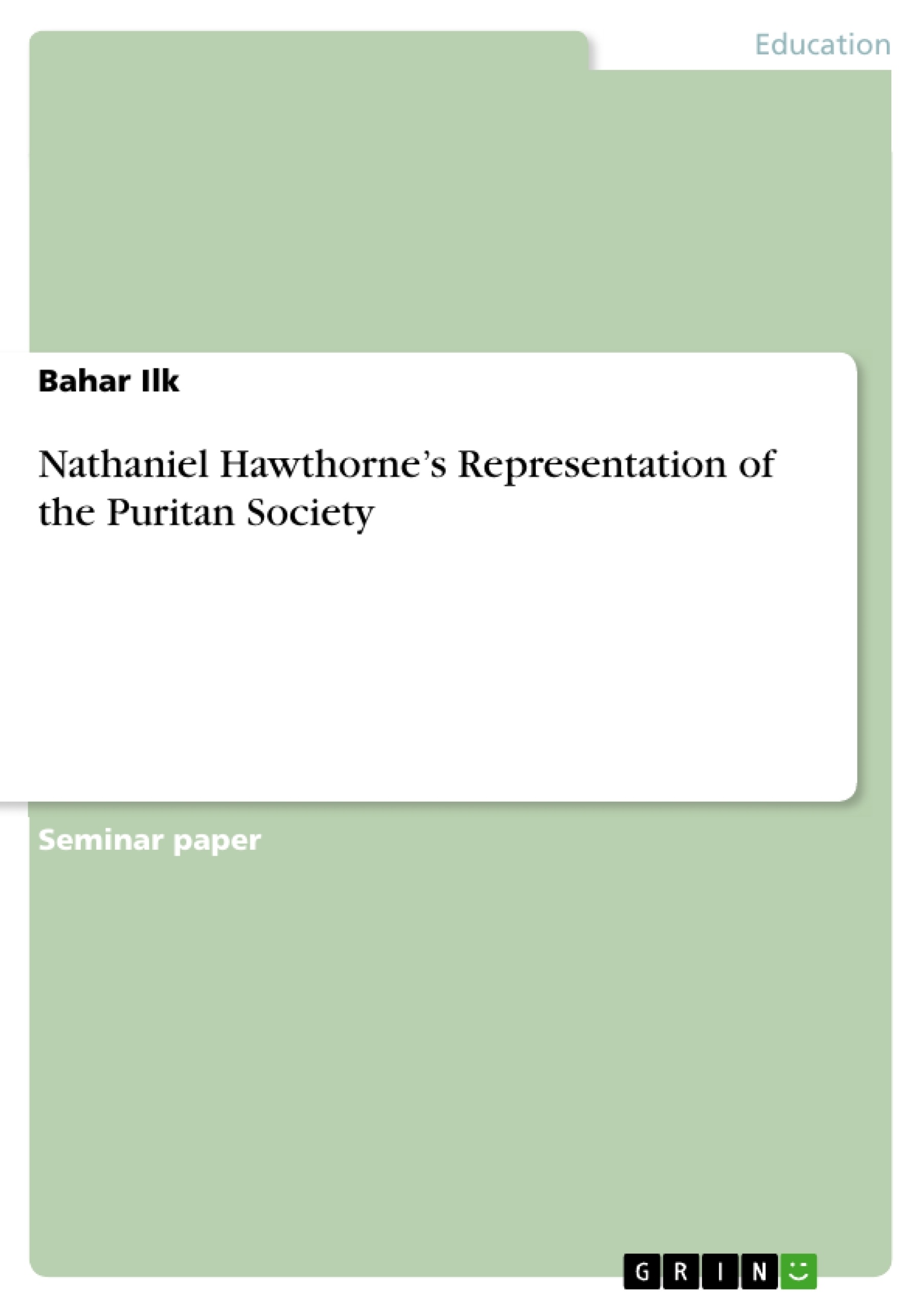The first section of this paper will examine Hawthorne’s biography and historical background from which his Puritan inheritance arose in order to understand his works. After the historical background has been depicted, the focus will be set on the ambiguous illustration of the Puritan community in two of his works. Being a direct descendant of Massachusetts Baycolonists, the Puritan era of New England served as a lifelong preoccupation for Hawthorne and inspired many of his stories, especially "The Scarlet Letter" and “Young Goodman Brown”. Therefore, these two works are particularly significant in terms of their representation of Puritanism.
Inhaltsverzeichnis (Table of Contents)
- A. Introduction: Hawthorne's Representation of the Puritan Society
- I. Nathaniel Hawthorne's Biography
- II. History and Development of Puritanism
- B. The Depiction of the Puritan Society
- I. The Illustration of the Puritan Society in The Scarlet Letter
- 1. "The Custom-House"
- 2. An Investigation into Selected Chapters of The Scarlet Letter
- II. The Portrayal of the Puritan Society in "Young Goodman Brown"
- 1. Historical Reference to Puritanism in "Young Goodman Brown"
- 2. The Depiction of Puritanism in "Young Goodman Brown"
- I. The Illustration of the Puritan Society in The Scarlet Letter
- C. Conclusion: Hawthorne's Ambiguity towards the Puritan Society
Zielsetzung und Themenschwerpunkte (Objectives and Key Themes)
This paper examines Nathaniel Hawthorne's representation of the Puritan society in his works, particularly "The Scarlet Letter" and "Young Goodman Brown." The analysis aims to demonstrate the narrator's ambivalent views on Puritanism, highlighting both its harsh aspects and its positive influences. The study explores how Hawthorne's personal background and the historical context of Puritanism shape his narrative.
- Hawthorne's personal connection to Puritanism and its influence on his writing.
- The portrayal of Puritan society as both oppressive and morally rigid in "The Scarlet Letter" and "Young Goodman Brown."
- Hawthorne's ambivalent perspective on Puritanism, encompassing criticism, compassion, and tenderness.
- The significance of historical context and Puritan beliefs in understanding Hawthorne's works.
- The role of symbolism and allegorical elements in conveying Hawthorne's message about Puritanism.
Zusammenfassung der Kapitel (Chapter Summaries)
The introduction delves into Hawthorne's biography, highlighting his family's involvement in the Puritan era and his subsequent feelings of guilt and introspection regarding their actions, particularly the Salem Witch Trials. It also provides a historical overview of Puritanism, tracing its development from its origins in England to its establishment in New England.
The first section of the paper explores Hawthorne's depiction of the Puritan society in "The Scarlet Letter," focusing on the "Custom-House" section and analyzing selected chapters of the novel. This section examines how Hawthorne utilizes elements of Puritanism to illustrate the societal pressures and moral complexities of the time.
The second section delves into "Young Goodman Brown," analyzing the historical references to Puritanism and examining how Hawthorne portrays the society's hypocrisy and the potential for corruption within its rigid moral structure.
Schlüsselwörter (Keywords)
The primary keywords and themes of this paper include Puritanism, Nathaniel Hawthorne, "The Scarlet Letter", "Young Goodman Brown", historical context, societal pressures, moral ambiguity, symbolism, allegory, hypocrisy, and transcendentalism. These terms encapsulate the key concepts and focuses of the analysis, providing a framework for understanding Hawthorne's representation of the Puritan society.
- Quote paper
- Bahar Ilk (Author), 2016, Nathaniel Hawthorne’s Representation of the Puritan Society, Munich, GRIN Verlag, https://www.grin.com/document/380756



